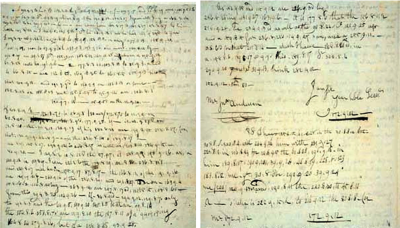How to trace the cause of a fire disaster?

On New Year’s Eve, 1986, one of the most disastrous fires since the Second World War killed 97 people in a hotel in Puerto Rico. Workers at the hotel, the Dupont Plaza in San Juan, had become angry over the lack of a pay settlement, and two of them used methylated spirit to set fire to cardboard boxes and other rubbish in an empty ballroom.
Within 15 minutes the flames had engulfed the entire ground floor and trapped hotel guests on the top floor of the 21-storey building. Many of the 1400 occupants had to be rescued by helicopter. As well as the 97 dead, there were 140 people injured.
Investigators from the US Bureau of Alcohol, Tobacco and Firearms were on the scene while the fire was still raging. When they examined the charred remains of the furniture in the ballroom later, they discovered traces of the methylated, spirit and decided that the fire had been brought in to interview hotel staff.
Eventually, three employees were arrested – one charged with lighting the fire, one with assisting him, and the third with supplying the spirit. All three were convicted and given prison terms ranging from 75 to 99 years.
Fire investigators are among the first on the scene after a fire has been put out. Their first task is to preserve and record the remains. Sometimes it is clear that an arsonist has been at work: fires may have been started at several points, or someone might have been spotted running from the scene just before flames were noticed.
The next task is to locate the place or places where it was most intense. The spread of the fire must also be tracked. Much can be learned by looking at smoke patterns and damage to surfaces. Metals and glass can be useful guides. A metal rail will distort or melt according to its proximity to the hottest part of the fire. The density of cracks in glass usually corresponds to the intensity of heat.
Expansion of metals can also be revealing – a steel joist 33ft (10m) long and heated to 932 (500 will expand by 2 ¾ in (70mm). the depth of charring in wood or in layers of carpet also gives an indication of the heat or duration of a fire.
Against this must be balanced factors which help to spread fire. Lift shafts, air vents and stairwells give a chimney effect, raising hot gases to other parts of a building and creating secondary seats of fire. The investigator can be confused by localized fires caused by broken gas pipes or stored fuel. Exploding aerosol cans can create fireballs several feet across.
Having found the seat of the fire, the investigator will look for signs of the cause – empty petrol can leave by an arsonist, charred wiring that indicates a faulty electrical connection, even a fragment of carelessly discarded match.
Forensic scientists are skilled at examining fragments of burnt materials. After one of Italy’s worst fire disasters, the burning of the Statuto Cinema in Turin on February 12, 1983, in which 64 young people died, the projectionist was able to point to the site where the flames first appeared. Fire inspectors discovered the remains of old wiring which had started the blaze.
When remains of the wallpaper, carpeting and upholstery were sent for forensic examination in Rome, scientists found that contrary to Italian fire safety regulations none of these had been fireproofed. After a lengthy trail, the cinema owner, the supervisor of the redecoration work and two local fire officers, who had declared the cinema to be safe, were all sent to prison for between four and eight years.
If no cause of a fire is apparent the investigator might find that a dead body was a murder victim, suggesting the fire was started to cover up the crime. A human body is extremely difficult to burn away completely and the remains can tell investigators a great deal. There could be more intense burning of the body than its surroundings, suggesting that it had been set alight first, or evidence of asphyxiation in the remaining lung tissue, indicating that the person had been strangled.
The fire which killed 31 people at King’s Cross Underground Station in London in November 1987 was first believed by some to be arson. It began on an escalator and was fanned by the draught of air coming from the train tunnels below ground. Investigators finally concluded that it began in accumulated fluff and grease under the escalator, almost certainly ignited by a discarded match. Smoking had been banned on underground trains in July 1984, but many people lit cigarettes on the escalator as they were making their way out of the station.
Picture Credit : Google










